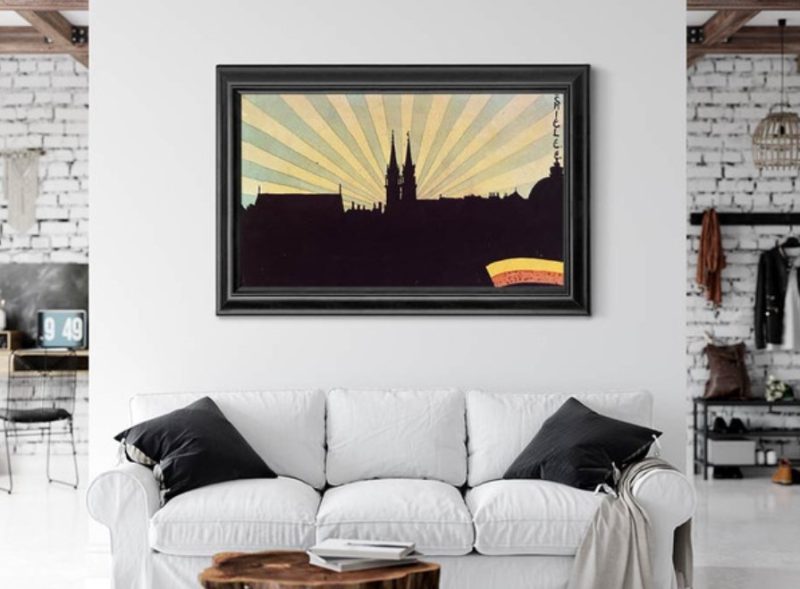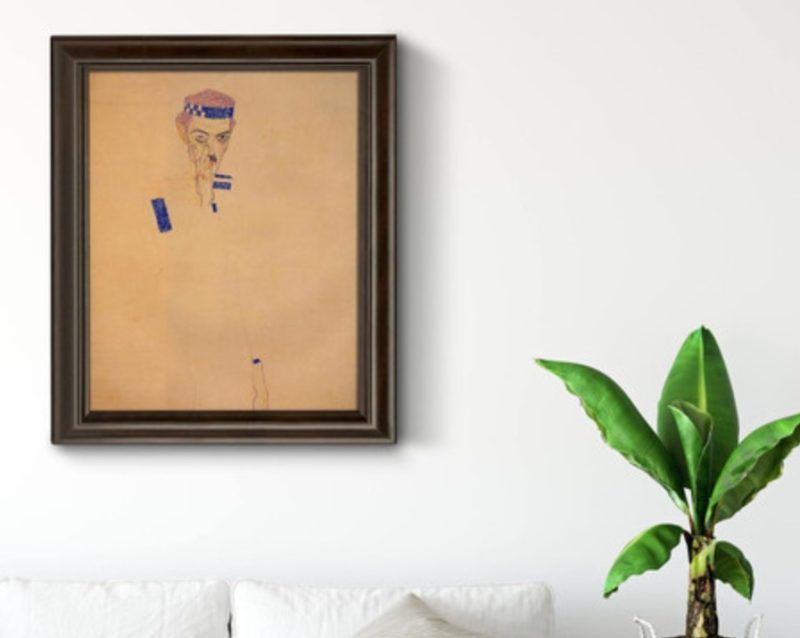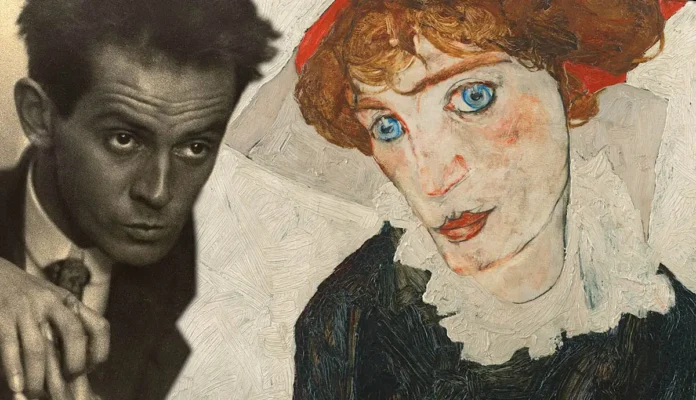When you speak of art that defies the norms and goes against conventional beauty standards in art, the top options would include some Egon Schiele paintings. Egon Schiel is an Austrian expressionist artist from the early 20th century whose work is characterized by expressive nudity and figural distortions.
His work consisted of portraits of others, self-portraits, landscapes, etc. So, getting some Egon Schiele art would be perfect if you’re into Egon Schiele art or want something different for your room. In this article are some of his paintings you can hang up your room walls.
1. Silhouette of Klosterneuburg (1906)

The Silhouette of Klosterneuburg is one of Egon’s landscape paintings. At first glance, it doesn’t seem ordinary at all. Most landscape paintings at the time enhanced the current colors of their inanimate subjects and explored the natural curves and edges.
In the case of some of Egon Schiele paintings, he doesn’t give attention to the colors or intricate details of Klosterneuburg. Klosterneuburg was the place where Egon had his first art exhibition for his works.
The portrait shows a silhouette of the city with a rising sun behind it, alluding to a deeper story than just a painting. Considering how his exhibition at Klosterneuburg was where his career really kicked off, the rising sun is even more significant.
For people who have dreams that require people to judge their work, the Sillhouette of Klosterneuburg painting serves as a beacon of hope, a rising sun in their careers and lives. They can wake up every day and gaze at it and keep up hope that their dreams will come true as Egon’s did.
2. Portrait of Wally (1912)
Portrait of Wally is one of Egon’s most famous works. It’s an oil painting depicting Wally Neuzil, Egon’s former lover and muse. The lovers used to live together in his mother’s hometown and paint the community’s teenage girls until the locals sent them packing.
It’s a portrait showing Auburn-haired Wally looking up at the viewer with bright blue eyes wide open for you to admire. She’s painted with her head slightly lowered and her eyes looking towards us almost as if she’s looking directly at the viewer of the painting.
Through his angles, we perceive tenderness and intimacy owing to how close the muse and artist were. He was in love with this beautiful woman with bright blue eyes.
Since its completion, Portrait of Wally has changed hands multiple times. It was first the personal property of a Jewish art dealer Lea Bondi Jaray who was also the owner of Galerie Würthle in Vienna.
Portrait of Wally was later seized, and Lea was forced to hand over her gallery to Friedrich Welz and fled to London to escape the Nazis. The painting’s ownership came under a lengthy court battle in 1998 and lasted till 2010, when the case of ownership was resolved.
If you don’t want an explicit painting hanging on your bedroom wall but still want an Egon Schiele painting, consider Portrait of Wally.
3. Man with Blue Headband and Hand on Cheek (1909)

This painting, The Man with Blue Headband and Hand on Cheek, was originally an art study by Egon Schiele. When you look at it now, it looks like a finished work with intentionally absent body parts.
The portrait shows a colored sketch of a man holding his cheek, drawing down a lid, and gazing lazily at the viewer. His head, shoulder, hands, and specific shirt patterns are the only thing visible about this man.
A blue headband with a checkered flag is fitted to his head and is part of the painting. Going by that design and the choice of other present colors, it seems that the subject of this portrait was a uniformed man working in the navy or other government institutions.
His other body parts are drawn with such extremely faint lines that you’ll almost miss them, except if you look closely at the drawing. When you do consider this absence and really look at the painting, it becomes a whole, complete painting in your eyes.
4. Winding Brook (1906)
Winding Brook is one of Egon’s more colorful and vibrant paintings. It slightly strays from his usual warm but dull colors of choice.
The portrait is of a gentle brook in an autumn forest, winding down a path and taking fallen leaves along it. It’s possible that Egon Schiele used to visit this place and fell in love with it. The colors, attention to detail, and seeming love for nature are evident in how it’s painted.
A first glance would take you back to an early childhood where you read storybooks about mystical creatures or animals who lived in the forest. A second, closer look will bring you a feeling of peace and serenity as you gaze down the winding brook in this painting.
This Winding Brook painting would offer an excellent addition of a soothing balm to your room. After a hard day’s work, you’ll want to recline in your bed or resting chair and admire this nice, peaceful painting as you drift off to a forestry sleep.
5. Portrait of the Painter Anton Peschka (1909)

This beautiful portrait is of Anton Peschka, Egon’s close friend and fellow Austrian painter. Egon Schiele painted it in Vienna in 1909, during the period when his artistic style started gaining him recognition as an artist.
They both attended Vienna’s Academy of Fine Arts and were classmates, but Anton was five years older than Egon. Egon eventually became Anton’s brother-in-law when he married his younger sister Gertrude (or Gerti) Schiele in 1914.
At the time, it was common to find artist friends painting portraits of each other, especially when family tied them. This portrait by Egon Schiele shows Anton sitting in an armchair, wearing a rose pink suit and facing the left so that only his left silhouette is visible.
Portrait of the Painter Anton Peschka was one of Egon’s earliest paintings that he first exhibited. The intent behind it signifies family, friendship, and brotherhood.
Conclusion
There’s no doubt that Egon Schiele was a talented artist while he was alive, and his works show it. They defy beauty conventions and let you see exactly what he sees without mincing his strokes.
Now that you know about some of Egon Schiele’s paintings, you can hang them in your bedroom. Hopefully, you’ll be able to add a piece or two to your room collection.




